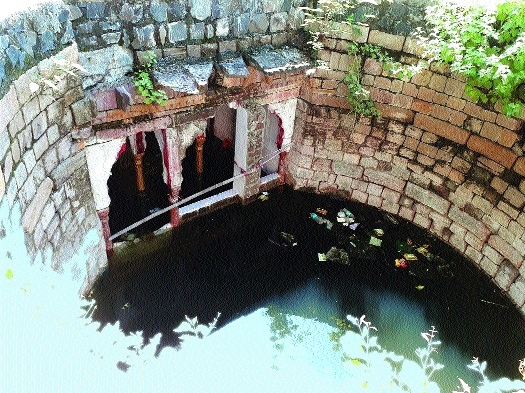‘Baolis’ tell the tale of foresightedness of Bhonslas
| Date :27-Sep-2021 |

The ‘Baoli’ constructed by Bhonslas in Nandanvan area.
By Shirish Borkar :
THE Bhonsla kings, whose contribution in creating water resources in the city and their management had been immense, had worked tirelessly to ensure that there was no shortage of drinking water to the people not only during their regime but also for future generations. They constructed step-wells, popularly known as ‘Baoli’, and big wells in various parts of the city. Many are still in use, and tell the tale of foresightedness of the Bhonslas. Besides digging ponds like Ambazari, Telankhedi, and Sakkardara, the Bhonsla kings equally concentrated on construction of step-wells and digging big wells in different parts of the city between 1730 AD and 1853 AD. Many of these ‘Baolis’ and wells are still being used by people for drinking water. Before the Bhonslas assumed power, there were about nine big public wells in Nagpur.
After taking over the reins, they dug as many as 42 huge wells in the area of their palace and parts of their kingdom. Initially, Shripad Chitale, a retired scholar from Rashtrasant Tukadoji Maharaj Nagpur University, studied these wells. Later, Dr Sujata Gaurkhede, Assistant Professor and former principal of Umme Salma Girls Arts and Science College, pursued the research work and found that a few of these wells were situated near Kothi Road. Some of the ’Baolis’ and wells were repaired by the Government and civic authorities by covering them up with nets and iron grills. As many as nine ‘Baolis’ were built during the Bhonsla rule to quench the thirst of the people as well as for farming and other daily activities. Even the soldiers used to take water from these Baolis located at Sakkardara, Nandanvan, Rajabaksha, Motibag, Khamla, Indora, and Mahal. These step-wells never dried, as they are connected with the lakes. The largest ‘Baoli’ was built in Khamla with a depth of about ‘six elephants.’ It was also used to keep secret goods and vital Intelligence material. There were stairs to get down to the Baoli. In the middle of it, there was a big ladder or stairs connected to the inside terraces. These terraces were used for relaxation in the cool atmosphere to escape the scorching heat of Nagpur during summer. But, after the Bhonsla rule, the Baoli at Khamla was destroyed due to lack of attention of the Government. As a result, huge buildings have been constructed over it.
Today, the internal structure of the Baoli at Nandanvan is in a dilapidated condition. Some of the wells and step-wells were connected with Ambazari, Shukrawari, Telangkhedi, Sonegaon, and Sakkardara lakes. A few seem to be linked with Lendi Talao and Naik Talao. Speaking to ‘The Hitavada,’ Dr Sujata Gaurkhede said, “It is estimated that the population during Bhonsla period was about one-and-a-half million and people used to get sufficient water to fulfill their needs.” As per records, even Kol Duk, a British lawyer, had praised the contribution of the Bhonslas because of Telangkhedi Lake and garden, she added. She said, the British appreciated the work of the Bhonslas due to digging of the western part of Telangkhedi garden, creating a natural pond surrounded by hills from all four sides, which is still visible today. “By collecting rainwater in the pond, and its deepening helped in generating sufficient water supply for the city,” added Dr Gaurkhede. Dr Gaurkhede said that wells were dug on both sides of the central road and water from Telangkhedi Lake was comfortably distributed through a pipeline to Maharajbag under the force of gravity. Hence, Maharajbagh and Dr Panjabrao Deshmukh College of Agriculture and its premises always stayed green, she added. She did field study and presented technical papers on the basis of the archeological and historical evidence in International conferences, and attributed the credit for present-day greenery of Nagpur to the Bhonslas.
